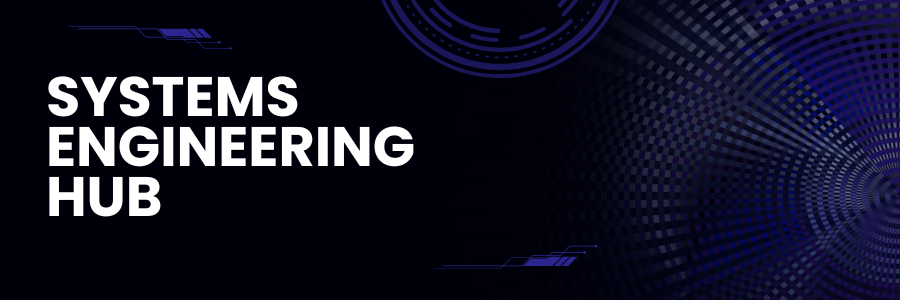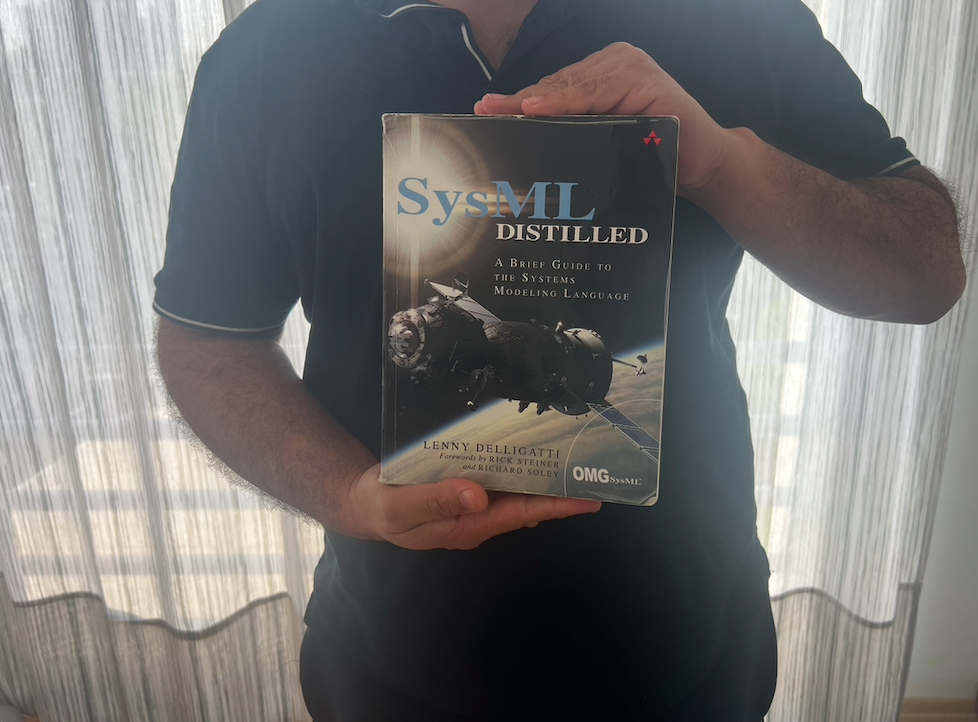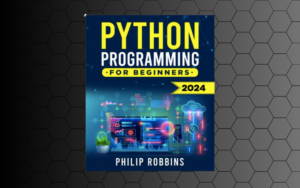In the rapidly evolving field of systems engineering, mastering the Systems Modelling Language (SysML) has become crucial for professionals looking to enhance their design and analysis capabilities. “SysML Distilled” by Lenny Delligatti emerges as a pivotal resource for engineers and modellers. This book demystifies SysML, offering a clear, concise guide that caters to beginners and experienced practitioners alike. The importance of SysML in today’s engineering landscape cannot be overstated, as it extends UML with enhanced systems engineering capabilities for a broad spectrum of systems, encapsulating all aspects of a system’s design.
Buy from Blackwells
My Journey
I bought this book in 2017. At that time i was just getting started with SysML. The project i was working on were looking to adopt MBSE.
This book helped to get a quick holistic view of SysML, whilst providing the understanding of SySML key concepts.
About the Author

Lenny earned his B.S. degree in Electrical and Computer Engineering from Carnegie Mellon University and his M.S. degree in Computer Science Systems Engineering from the University of Denver. He holds the OMG Certified Systems Modelling Professional (OCSMP) Model Builder: Advanced certification, the highest level of certification in SysML and Model-Based Systems Engineering (MBSE) methodology. Additionally, he holds the OMG Certified UML Professional (OCUP): Advanced certification, the highest level of certification in UML.
Lenny is the Founder and Principal Consultant at Delligatti Associates, LLC, a model-based systems engineering (MBSE) consulting company. Prior to founding Delligatti Associates, Lenny was a senior systems engineer with Lockheed Martin, creating SysML models and serving as the MBSE lead for NASA’s Mission Control Center: 21st Century (MCC-21) project at Johnson Space Center in Houston, Texas. He previously served as an embedded software engineer on NASA’s Aircraft Simulation Program (ASP), building VxWorks kernels and developing flight software for NASA’s fleet of Gulfstream II in-flight Space Shuttle simulators. He also served as a software engineer on the Nomad project at Carnegie Mellon University’s Field Robotics Center, designing and developing the Sensor Manager subsystem for the Nomad Autonomous Rover.
Lenny is an active member of the Object Management Group (OMG) SysML Revision Task Force (RTF), the OMG UML RTF, and the OMG OCUP2 Certification Development Team. He serves also as the Education and Outreach Director for the Texas Gulf Coast Chapter (TGCC) of the International Council on Systems Engineering (INCOSE), supporting the professional development of the Houston-area systems engineering community.
In addition to his engineering experience, Lenny served as a Surface Warfare Officer in the United States Navy, completing a deployment in support of Operation: Enduring Freedom and two tours of duty in Sasebo, Japan and Norfolk, Virginia. Following his Navy service, he received formal training in pedagogy at Old Dominion University and earned a license to teach mathematics in the State of Virginia. He served as a mathematics teacher and department head in the Fairfax County Public Schools system before transitioning back into the engineering profession upon his move to Houston, Texas.
Lenny is passionate about engineering and helping engineers develop more effective ways to do engineering. He has created and delivered hundreds of hours of classroom and online training to thousands of systems and software engineers on the topics of UML, SysML, and MBSE, enabling many to earn OMG certifications and lead MBSE efforts on their projects. He has delivered SysML and MBSE presentations at INCOSE meetings and at American Institute of Aeronautics and Astronautics (AIAA) Technical Symposia at Johnson Space Center.
Learn more and connect with Lenny on LinkedIn and Facebook and follow him on Twitter @LennyDelligatti. You can reach him by e-mail at ldelligatti@delligattiassociates.com
The Essence of SysML and “SysML Distilled”
The Systems Modeling Language (SysML) extends UML with powerful systems engineering capabilities for modeling a wider spectrum of systems and capturing all aspects of a system’s design. “SysML Distilled” is the first clear, concise guide for everyone who wants to start creating effective SysML models.
Drawing on his pioneering experience at NASA, Lenny Delligatti illuminates SysML’s core components and provides practical advice to help you create good models and good designs. The book begins with an easy-to-understand overview of Model-Based Systems Engineering (MBSE) and explains how SysML enables effective system specification, analysis, design, optimisation, verification, and validation.
Why “SysML Distilled” Is a Must-Read
Quickly Putting SysML to Practical Use: Delligatti’s guide is not just theoretical but immensely practical. It is designed to quickly put SysML to use, showing you how to employ all nine types of SysML diagrams effectively, even if you have no previous experience with modeling languages.
A Deep Dive into SysML’s Components: The book covers the essential concepts applicable to all SysML diagrams, including diagram elements and relationships, block definitions, internal structures, use cases, activities, interactions, state machines, constraints, requirements, and packages.
The Practical Application of SysML: Through a case study that runs throughout the text, “SysML Distilled” demonstrates the application of SysML in modeling a complex, real-world sociotechnical system, offering readers a practical perspective on how SysML can be applied in their projects.
Conclusion: Starting Your Journey with SysML
Lenny Delligatti’s “SysML DISTILLED” stands as an indispensable guide for anyone looking to delve into the world of SysML. Whether you are a novice eager to learn about SysML or an experienced practitioner seeking to enhance your modelling skills, this book provides the knowledge you need in a clear, accessible format. With Delligatti’s expert guidance, readers are equipped to embark on their SysML journey, leveraging this powerful language to create more effective and comprehensive system models.
For my resources on Systems Engineering visit our ‘Systems Engineering Hub’






